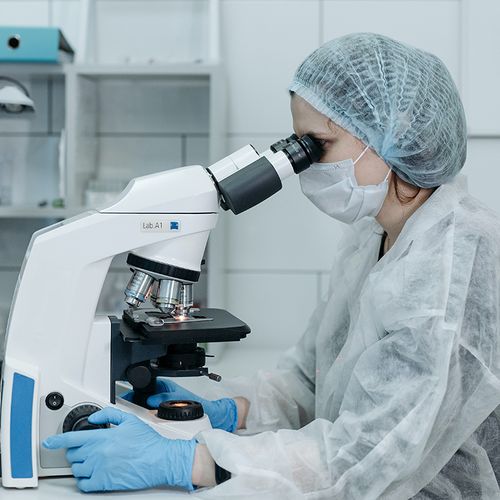One of the biggest medical discoveries of the last few decades involves the use of the smallest imaginable particles for treating such conditions as cancer, diabetes and heart disease.
So-called nanomedicine utilizes nanoparticles that, in some cases, measure about 100,000 times narrower than a human hair. These particles are small enough to navigate safely in the circulatory system and perform a variety of crucial functions-for example, they may recognize abnormal cells, slip through cell membranes and, eventually, deliver medications precisely where they're needed, reducing side effects.
To learn how nanomedicine is now being used and how it may affect treatments in the future—we spoke with Paolo Decuzzi, PhD, a leading authority in this emerging field…
- Why are nanoparticles so useful in medicine? Nanoparticles are man-made objects, measured in nanometers (nm)--that is, one-billionth of a meter.
Unlike individual drug molecules, nanoparticles can be engineered to be multifunctional. Nanoparticles can carry different molecules simultaneously, so they can be used for medication, imaging and early disease detection
- What are some of the most important current uses of this technology? Though the technology itself is not widely recognized by the public, one of the first nanodrugs for treating cancer, doxorubicin hydrochloride liposome (Doxil), was approved by the FDA several years ago. This potent chemotherapy drug is encased by a liposome, a lipid-based nanoparticle. The drug is used to treat ovarian and breast cancers, leukemia and Kaposi's sarcoma.
Doxorubicin is carried into cells by the nanoparticle. When it's encased in a nanoparticle, more of the active ingredient stays concentrated until it is released into the tumor.
This is critical for preventing or reducing side effects. At the same time, it allows oncologists to use a higher dose because the improved biodistribution reduces toxicity. A higher dose is more likely to kill all the cancer cells, preventing relapse. A handful of nanodrugs have been approved by the FDA, and many more are in the pipeline for clinical trials.
- Why is a nanoparticle more "targeted" than an individual molecule? When you take a conventional drug, the molecules enter the bloodstream and scatter in different directions. Some of the active ingredient will go where it's needed, but most of the molecules will reach and penetrate other tissues, including the liver, kidneys, heart and lungs. This scattershot effect is what causes many of the side effects of chemotherapy and other drug treatments, such as nausea and hair loss.
Currently approved anticancer nanodrugs, however, utilize the fenestrations (openings) in tumor blood vessels that are absent or smaller in normal tissue. Most nanodrugs are designed to pass through tumor vessel walls but are too large to enter healthy tissue.
- Can this work with all cancers? Potentially, yes--but in different ways. It's complicated because the size of the blood vessel openings varies depending on the type of cancer. Also, the number and/or size of the openings change over the course of the disease. They don't occur uniformly-some areas within a tumor will have these openings, and other areas do not. This limits the effectiveness of treatments. And fenestrations are characteristic in cancer but absent in other diseases.
A new strategy is to develop nanoparticles that are designed to recognize and lodge in the diseased blood vessels rather than cross into the tumor openings. The particles will stick to the outer walls of the blood vessels that supply tumors. Then, they'll release even smaller particles that pass through the blood vessels, deep into the tumor.
- What other type of nanotreatments are available? Much of the work is still in experimental stages. Scientists have developed thermal ablation therapy nanoparticles that deliver heat instead of drugs to the diseased tissue. The nanoparticles injected into the body accumulate in tumors. When exposed to an external source of energy, the nanoparticles generate heat, increasing the temperature in the surrounding tissue. Cancer cells start to die when their temperature reaches about 115°F. Different nanoparticles and external energy sources have been proposed and tested.
For example, nanoparticles made out of gold would be warmed by an infrared laser, penetrating a few millimeters deep into the body. Magnetic fields have also been used with iron oxide nanoparticles, and this therapy is currently approved in Europe to treat glioblastoma multiforme, a deadly brain tumor.
- What else can be loaded into nanoparticles? In theory, nanoparticles can contain almost anything, including drug "cocktails" for treating cancer or other diseases, such as diabetes or heart disease.
We can also create multifunctional nanoparticles that combine imaging and treatment. For example, a nanoparticle could release drug molecules for treating a cancer. Then, it would release imaging agents to show how well the treatment is working. Such nanoparticles are now being created for experimental purposes, but it's too early to predict when the technology may be available for clinical use.
- And what about heart disease? It's not possible today, but one of our objectives is to develop nanoparticles that can both diagnose and treat atherosclerosis, the cause of most strokes and heart attacks.
The largest blood vessels in patients with atherosclerosis have multiple unstable plaques, areas where dangerous clots can form very quickly. These areas are difficult to detect with current imaging tools. Nanoparticles can be designed that will cling to and illuminate these areas. They can then be triggered to release drugs that will induce the regression or stabilization of the plaque.
